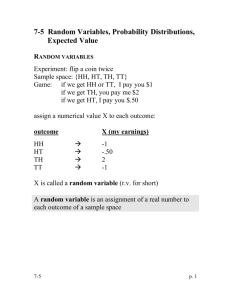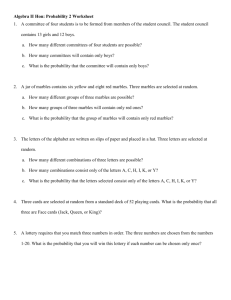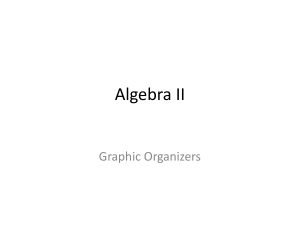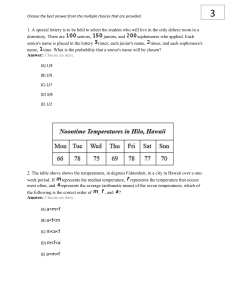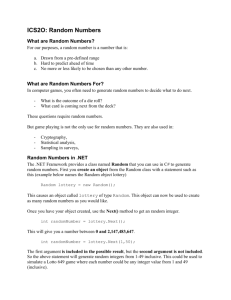Chapter 8.2 Homework Solutions - JuabMath
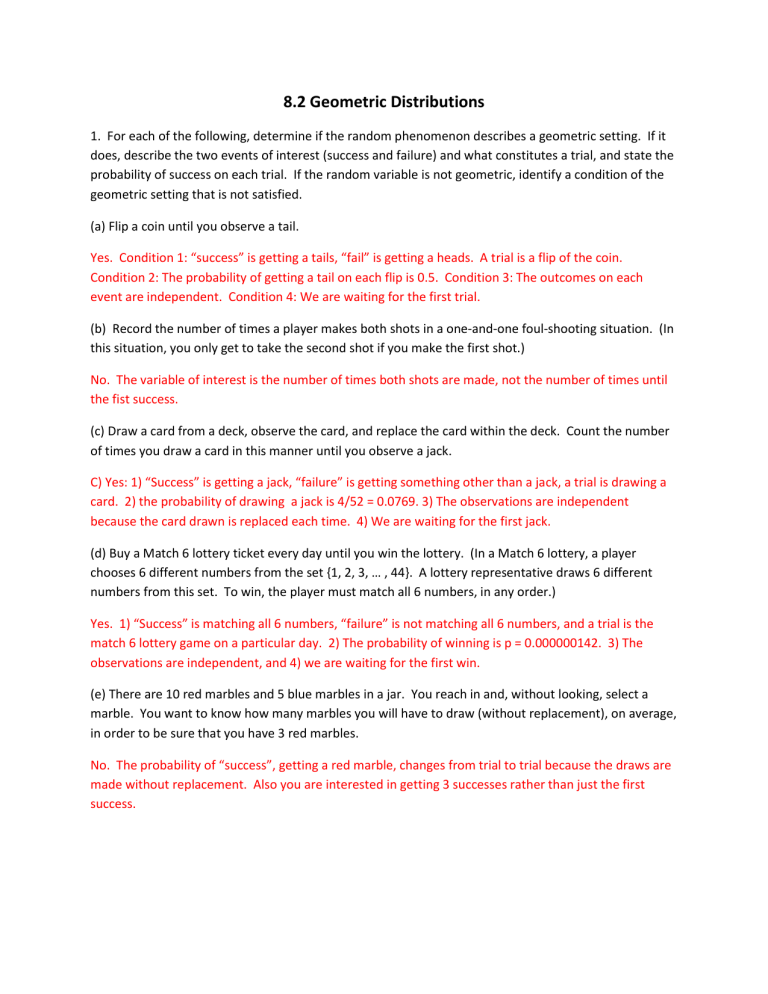
8.2 Geometric Distributions
1. For each of the following, determine if the random phenomenon describes a geometric setting. If it does, describe the two events of interest (success and failure) and what constitutes a trial, and state the probability of success on each trial. If the random variable is not geometric, identify a condition of the geometric setting that is not satisfied.
(a) Flip a coin until you observe a tail.
Yes. Condition 1: “success” is getting a tails, “fail” is getting a heads. A trial is a flip of the coin.
Condition 2: The probability of getting a tail on each flip is 0.5. Condition 3: The outcomes on each event are independent. Condition 4: We are waiting for the first trial.
(b) Record the number of times a player makes both shots in a one-and-one foul-shooting situation. (In this situation, you only get to take the second shot if you make the first shot.)
No. The variable of interest is the number of times both shots are made, not the number of times until the fist success.
(c) Draw a card from a deck, observe the card, and replace the card within the deck. Count the number of times you draw a card in this manner until you observe a jack.
C) Yes: 1) “Success” is getting a jack, “failure” is getting something other than a jack, a trial is drawing a card. 2) the probability of drawing a jack is 4/52 = 0.0769. 3) The observations are independent because the card drawn is replaced each time. 4) We are waiting for the first jack.
(d) Buy a Match 6 lottery ticket every day until you win the lottery. (In a Match 6 lottery, a player chooses 6 different numbers from the set {1, 2, 3, … , 44}. A lottery representative draws 6 different numbers from this set. To win, the player must match all 6 numbers, in any order.)
Yes. 1) “Success” is matching all 6 numbers, “failure” is not matching all 6 numbers, and a trial is the match 6 lottery game on a particular day. 2) The probability of winning is p = 0.000000142. 3) The observations are independent, and 4) we are waiting for the first win.
(e) There are 10 red marbles and 5 blue marbles in a jar. You reach in and, without looking, select a marble. You want to know how many marbles you will have to draw (without replacement), on average, in order to be sure that you have 3 red marbles.
No. The probability of “success”, getting a red marble, changes from trial to trial because the draws are made without replacement. Also you are interested in getting 3 successes rather than just the first success.
2. Flip a coin until a head appears.
(a) Identify the random Variable X.
The random variable of interest is X = number of flips required in order to get the first head. X is a
Geometric random variable with p = 0.5.
(b) Construct the pdf table for X. Then plot the probability histogram.
X
P(X)
F(X)(CDF)
1
0.5
0.5
2
0.25
0.75
(c) Compute the cdf and plot its histogram.
3
0.125
0.875
4
0.0625
0.9375
5
0.03125
0.96875
4. Refer to Example 8.19 (page 546).
(a) Use the formula for calculating P(X>n) on page 546 to find the probability that it takes more than 10 tosses until Glenn wins a stuffed animal.
P(X>n) = (1 – p) n = (1 – 1/12) 10 = .4189
(b) Find the answer to (a) by calculating the probability of the complement event: 1 – P(X ≤ 10). Your results should agree.
1
1 − 𝑃(𝑋 ≤ 10) = 1 − 𝑔𝑒𝑜𝑚𝑒𝑡𝑐𝑑𝑓 (
12
, 10) = 1 − .5811 = .4189
